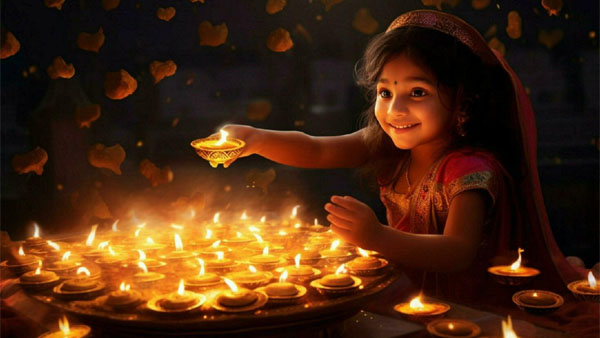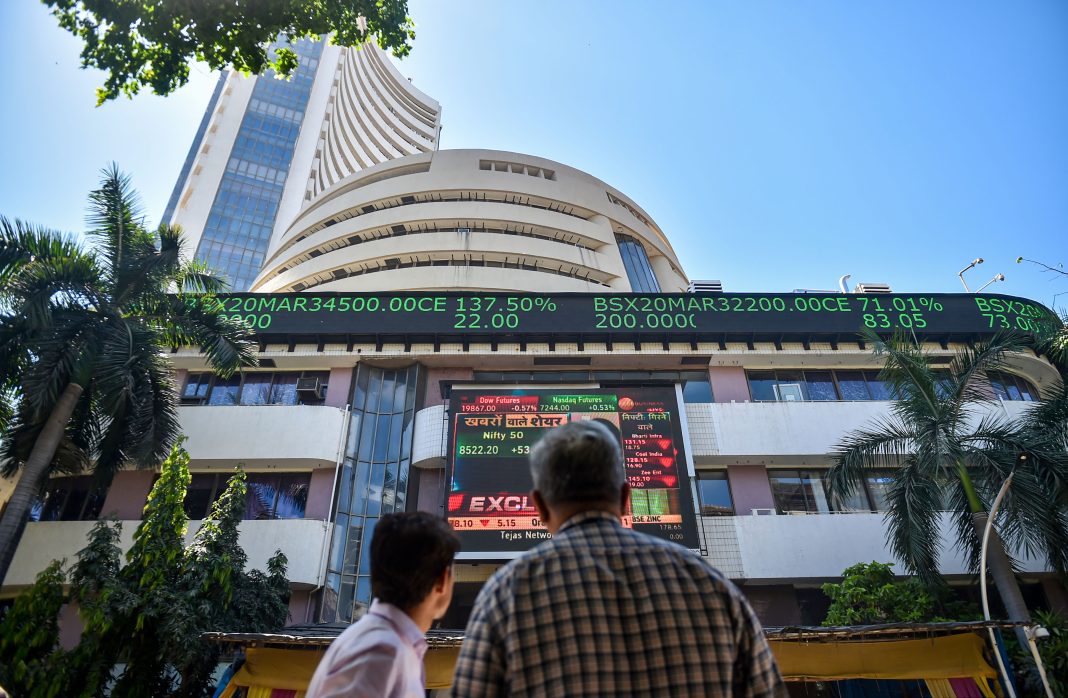By Dipak Kurmi
The Festival of Lights stands at a curious crossroads in contemporary India, where ancient traditions collide with modern environmental consciousness, creating a space for meaningful transformation. Diwali, with its promise of spiritual renewal and triumph of light over darkness, now invites us to reconsider not merely what we celebrate, but how we celebrate, urging a shift toward practices that honor both our cultural heritage and our planetary responsibility.
Looking back to simpler times reveals how Diwali once embodied a natural harmony with the environment that seems almost foreign to contemporary urban celebrations. In small towns and villages across India, Diwali afternoons were characterized by purposeful preparation rather than frenzied consumption. Fathers would drive to the nearest marketplace, sometimes traveling seventy kilometers to procure festive provisions that arrived wrapped carefully in crescent paper. These treasures included several dozens of unglazed clay diyas in assorted sizes, small beautifully painted clay temples with tiny depressions for diyas on each of their four sides, brightly colored clay parrots, and sugar animals shaped like deer, lions, horses, and tigers that children would consume with unrestrained delight.
The preparation of these simple clay lamps represented a ritual of mindfulness that modern celebrations often bypass. Families would wash and soak the diyas in water to prevent them from drinking up excessive oil, demonstrating an intuitive understanding of resource conservation. The family’s first aid kit would be ransacked for cotton wool, divided with mathematical precision into equal-sized pieces. Each piece underwent transformation as eager young palms rolled cotton fibers into perfectly shaped wicks, with siblings competing to produce the most symmetrical results. By evening, these still-damp but deemed adequately dry diyas would be arranged tidily along low boundary walls, awaiting the exact amount of mustard oil that an adult would carefully pour before lighting wicks to transform earthen vessels into flickering points of light.
This era predated our awareness of hydrogenated vegetable oils laden with unhealthy trans fats, when vanaspati ghee served cooking needs and a portion was set aside especially for lamp oil. The innocence of this practice reflected a time when Diwali celebrations occurred within natural limits, constrained by what could be locally sourced and reasonably afforded. The beauty of the celebration derived not from its extravagance but from its simplicity and the care invested in each element.
What strikes one most profoundly about these memories is how seamlessly they transcended religious boundaries. A practicing Muslim bringing tokens of devotion to his household, including an idol of Lakshmi for puja, represented not cultural appropriation but cultural participation. His family, residing in southernmost celebration of a festival that was, in a strictly religious sense, not theirs, exemplified the syncretic tradition that characterized pre-partition India. Mothers would light the first diya on thresholds with rough and ready rangoli patterns created from whatever materials the gumsla garden provided. Their home stood as one in a long row of houses almost identically adorned, united by celebration rather than divided by denomination.
This cultural harmony found its finest expression in Urdu poetry, where Hindu and Sikh poets wrote passionately about Diwali while simultaneously producing vast amounts of elegiac poetry and devotional manaqibat. Muslim poets waxed eloquent about Holi, Diwali, Janmashtami, Gurpurb, and Christmas, composing heart-warming verses about Ram, Krishna, Shiva, Guru Nanak, Buddha, Mahavir, and Isa Masih. Diwali attracted particular poetic attention not merely for its message of peace and promise of light, but for its syncretic aspects that transcended narrow sectarian boundaries.
Nazir Akbarabadi, the eighteenth-century poet from Agra, invited readers to collect all the blast, barode, diye, and mithai needed for Diwali ka Samsaan. Written over two centuries ago, his verses paint scenarios remarkably similar to village preparations: “Har ik makaan mein jala phir diyas Diwali ka, Har ik taraf ho ujala hua Diwali ka.” A lamp lit in every house on Diwali, light spreading in every direction, captured the democratic and universal nature of illumination.
Aba Ahmad Suroor expressed intoxication with light from countless lamps capable of lifting the heaviest hearts, describing the roof and ledge adorned with rows of earthen lamps as an army of light driving away inky blackness. Makhmoor Saaeeh questioned why we wait so eagerly for this singular night despite lacking certainty about our destination, celebrating how this night crosses the dark passage of a year, spreading effulgence and brightness across the horizon. Arab Malaiyani reminded audiences of the story behind celebrations, how this night carries the pitua remembrance of Raghubir, bearing the art of light for darkness and bringing flowers blooming with illumination.
These poetic traditions emphasized Diwali’s spiritual and communal dimensions rather than its material manifestations, pointing toward a celebration rooted in consciousness rather than consumption. The poets understood intuitively what environmental activists now articulate explicitly: authentic celebration need not depend upon excess.
Contemporary Diwali presents troubling contrasts to these memories. Peering through windows into murky, toxic smog that barely allows light to penetrate reveals the environmental cost of modern festivities. Despite rhetoric about green Diwali, crackers continue to explode, perhaps with less abandon than previous years but still with sufficient frenzy to occlude nascent light and facilitate perceived magnificence through artificial pyrotechnics. Fluorescent lights more appropriate for wedding halls remain in place for months beyond the festive season in classic instances of paste visual ostentation.
The pink germ of Delhi smog, locally termed gulabi gonda, has reached its halcyon days, stretching in a golden arc from late October through late November across much of North India. What were once times of mellow sunshine, blue skies, gentle breezes, and glowing afternoons have transformed into urban legends of air quality, relegated to the mythical status of grass-kohama belonging to kings, queens, fairies, and elves. For certain generations, memory persists of unmistakable scents associated with the season: sugarganni flowers, the intimidating beauty of har singahar, the call of the dhamsa or cotton-wool carder making his rounds to card old cotton for quilts and mattresses, early Nagpur oranges, roasted moonaphalas, and crunchy singharas.
Diwali once served as harbinger for these sensory experiences as days shortened and that sweet hunger emerged during the in-between period that was neither too hot nor too cold. The festival marked homecomings after annual sojourns, when silk and light workers returned and summer clothes were carefully packed away in mothballs and seven leaves. These rituals, observed across generations, now face extinction as polyesters replace natural fibers and air conditioning obviates seasonal adjustments.
Detecting nostalgia and sentimentality in these recollections misses the essential point. This is not a vacuum longing for a lost age but rather a clarion call to retrieve festivals from the clutches of ostentation and excessive display, from voracious materialism and overproduction, from suffocating fumes that demonstrate disconnection from natural seasons. The challenge facing contemporary celebrants is how to honor tradition while embracing environmental responsibility, how to create illumination without contributing to pollution, how to celebrate abundance without generating waste.
A green Diwali need not sacrifice joy or beauty. Instead, it returns to fundamental principles that animated traditional celebrations: mindfulness in preparation, moderation in consumption, community in participation, and consciousness of connection to both human and natural worlds. Clay diyas produced by artisans practicing pottery across generations, natural oils replacing synthetic alternatives, rangoli created from organic materials, mithai prepared in home kitchens rather than industrial facilities, and celebrations scaled to intimate rather than ostentatious proportions honor both heritage and environment.
The poets who celebrated Diwali across religious boundaries understood that authentic light emanates from consciousness rather than combustion. Their vision of a festival that spreads brightness across horizons did not require environmental degradation. As we stand at this crossroads, Diwali invites us to illuminate not merely our homes but our conscience, transforming celebration into a practice of mindful reverence for light, life, and the planet that sustains both.
(the writer can be reached at dipakkurmiglpltd@gmail.com)




